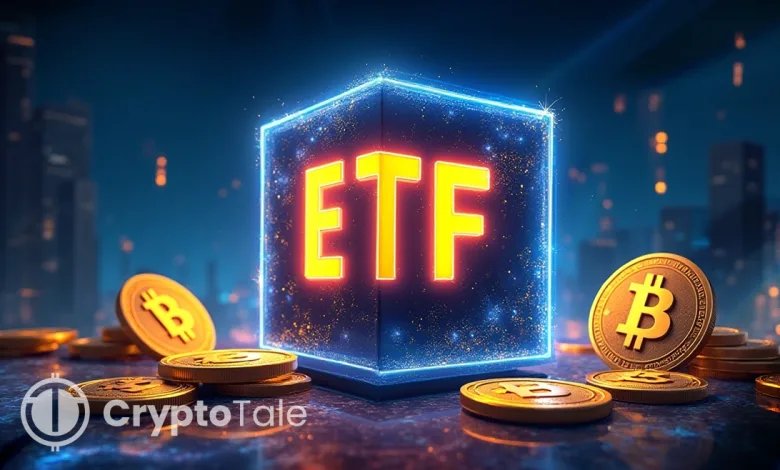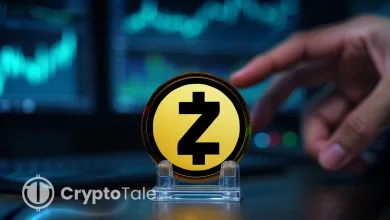Bitcoin ETFs Add $524M as Ether ETFs Lose, Solana Gains

- Bitcoin ETFs led inflows with $524M, indicating renewed investor confidence in the asset.
- Ethereum ETFs saw $107M outflows amid uncertainty over regulatory and staking issues.
- Solana ETFs logged 11 days of inflows, suggesting institutional interest in the network.
Bitcoin exchange-traded funds (ETFs) recorded a sharp rebound on November 11, 2025, attracting $524 million in daily inflows, while Ethereum ETFs suffered $107 million in redemptions.
The gain, led by BlackRock’s iShares Bitcoin Trust (IBIT), shows growing investor rotation across the crypto ETF sector. Meanwhile, Solana funds extended their winning streak to 11 days, reinforcing its rising institutional appeal.
Bitcoin Regains Investor Confidence
Bitcoin ETFs had their best week in a while as investors showed renewed interest in the top cryptocurrency. BlackRock’s IBIT led the way with $224.2 million in inflows, followed by Fidelity’s Wise Origin Bitcoin Fund (FBTC) with $165.9 million, and Ark Invest’s ARKB at $102.5 million. Grayscale’s GBTC added $24.1 million, and Bitwise’s BITB brought in $7.3 million.
This comeback comes after a period of slow activity, signaling growing confidence as Bitcoin holds steady above key price levels. Analysts link the uptick to hopes of possible monetary easing in early 2026 and wider adoption of regulated crypto products.
Bitcoin ETFs are the main gateway for big investors, with wealth managers turning to them as a safer way to hedge during uncertain times. This renewed interest highlights Bitcoin as the go-to choice for those navigating volatile markets.
Ethereum ETFs Face Pressure as Confidence Lowers
Ethereum ETFs, on the other hand, are facing pressure. They saw $107.1 million in outflows, mainly from Grayscale’s ETHE, and none of the nine listed Ethereum ETFs had any inflows.
This shows investors are cautious, unsure about Ethereum’s regulatory future, especially regarding its staking system and how its yields are classified by the U.S. Securities and Exchange Commission (SEC).
Ethereum still holds a strong position in decentralized finance (DeFi,) but its recent performance lags behind Bitcoin. Analysts point to delays in Ethereum upgrade plans and competition from faster Layer-1 blockchains as reasons for the slowdown in enthusiasm.
Some believe that money is now shifting toward Bitcoin and Solana as institutional investors adjust their portfolios. Regulatory agencies this week further increased focus on Ethereum.
After a 41-day government shutdown, the SEC resumed full operations, reviving reviews of more than 90 pending crypto ETF applications.
Among them are Ethereum and Solana-based funds awaiting final clearance. The renewed oversight could reshape fund approvals and restore momentum across proof-of-stake products.
Related: Solana ETFs Rise as Price Faces Key $190 Reclaim Challenge
Solana Extends 11-Day Inflow Streak as Interest Builds
Solana-based ETFs recorded $7.98 million in net inflows, 11 consecutive days of positive activity. VanEck’s BSOL added $2.1 million, while Grayscale’s GSOL gained $5.9 million. Even though the amounts are still small, the steady inflows show that Solana is gaining a reputation as an efficient blockchain that’s catching the interest of institutional investors.
Its fast transactions, low fees, and expanding DeFi activity have boosted confidence in the network. With the U.S. Treasury and IRS now allowing staking services for spot crypto ETFs, Solana funds could attract more interest as managers begin sharing staking rewards directly with investors.
This change follows a broader trend of big investors looking beyond Bitcoin and Ethereum for opportunities. As more developers build on Solana and network use rises, analysts view it as a strong Layer 1 option ready for larger institutional adoption.
Looking at ETF performances, Bitcoin still holds its appeal as a safe haven, Ethereum faces ongoing regulatory pressure, and Solana is steadily gaining credibility as a competitor. This shift suggests investors are starting to diversify beyond the usual crypto leaders.
As trading volume rises for U.S.-listed crypto ETFs, the differences highlight how the market is adjusting to clearer regulations, macroeconomic changes, and network strengths. With regulators active and new funds likely launching soon, institutional involvement could influence the balance among crypto networks heading into 2026.





